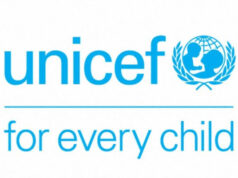Today Special : National Smile Day

Wear your best smile to this party as we celebrate National Smile Day every year on May 31. Founded by dentists Dr. Tim Stirneman and Jim Wojdyla of Compassionate Dental Care in Lake in the Hills, Illinois, this day is meant to, you guessed it, “Share with the world what the power of a healthy smile can do!” The best part, this day heralds the beginning of National Smile Month!
HISTORY OF NATIONAL SMILE DAY
The history of the smile can be traced back to monkeys and apes, according to primatologist Signe Preuschoft. These animals bare their teeth in a facsimile of a smile to show dominance or warn off predators. The theory is that humans copied this behavior and, over time, the smile evolved to show amusement and enjoyment. Research indicates that on the way to portraying happiness, smiles were a way of attracting mates among early humans.
If you’ve ever wondered why older portraits often showed unsmiling people, it was because people in that era had a lot of tooth rot caused by sugar and a poor diet. Plus, more common was the aristocratic perception that smiling and laughing was indecorous, and showed a lack of self-control or good manners. One of the few exceptions was Leonardo da Vinci’s “Mona Lisa,” although the portrait’s ambiguity is part of its fame. As dentistry and an attitude of authenticity developed, people began smiling even in portraits, this time with their teeth on display.
Studies of yearbook photographs over the years point to the breadth of smiles increasing over the years. The study indicates that because participants had to hold the pose for longer periods in the earlier days of photography, their smiles gradually dimmed. The prevalence of smiling in the recent past is linked to culture and traditions and varies from country to country. Some regions with high individualism and low population density had a higher incidence of people who smiled. A study found that the biggest reason people smile, however, can be attributed to a country’s tradition of diverse immigration over time. So places like Brazil and the United States, where people do not share common customs or languages, see higher incidences of smiles. The study states that this is because the smile is part of a universal language.
A French neurologist, Guillaume Duchenne, who studied the mechanism of facial expression, discovered there are two types of smiles: a Duchenne smile and a non-Duchenne smile. The former smiles with the eyes or is a genuine smile, whereas the latter is an ambiguous, non-genuine, or simply polite smile.
HOW TO CELEBRATE NATIONAL SMILE DAY
- Smile! : The best way to celebrate this day dedicated to smiling is to smile, of course! Spread some good cheer around and grace another person with your smile. We often don’t realize that we wear a frown for most of the day. Share a smile with someone just for a moment and see the difference it makes in your everyday interactions.
- Make someone else smile : Do one thing to bring a smile to someone else’s face. Start small (tell them a joke) or go big (volunteer at a children’s home). Whatever you choose, cherish the feeling of being able to light up someone’s life, and keep bringing smiles to everyone you meet.
- Visit your dentist : Since this day was created by dentists, delight yours by giving them a visit. Go for a dental checkup to make sure your smile is in tip-top shape.
5 FUN FACTS ABOUT SMILING
- Smiling is less taxing than frowning : It takes more muscles to frown than it does to smile.
- Babies are better at smiling than you are : Babies smile about 400 times a day, while, on average, adults only smile about 20 times.
- Babies can fake it too! : At only nine or 10 months of age, babies have learned to offer fake smiles to strangers, reserving real smiles and laughter for people they are comfortable with.
- We know when a smile is fake : Our brains have evolved to such an extent that we can see a fake smile a mile away — also, our brains automatically mimic the smile we see, which means we give a fake smile for a fake smile.
- Laughing for the heck of it : A study on why people laugh found that 80-90% of all laughter is in response to simple statements like “It was nice meeting you”, or “I’ll see you later.”
WHY WE LOVE NATIONAL SMILE DAY
- Smiles hold power! : Not only do they automatically make you feel good (yes, even fake smiles!), but they also create a temporary bond between the people sharing a smile. Data shows that over time, smiles can increase productivity and creativity in workers, and make people seem more competent and trustworthy.
- Smiles have health benefits too : The more we smile, the healthier our brains become. This is because smiles make us happy, thus reducing stress. Smiles are also known to reduce our blood pressure, heart rate, and pain. Smiling can increase endurance, strengthen our immune system, and even help keep the cells in our body healthy.
- A smile is the best accessory : Smiling shifts our mood, tipping it into the ‘happy’ side. A happy person is a more confident person. Walking into a room with a smile is better than wearing fancy brand-name clothes or shoes. There’s no downside to smiling, not in the way it looks, nor the results it brings us.




